Home>Articles>What Are Basic Hand Tools Needed For An Industrial Electrical Job
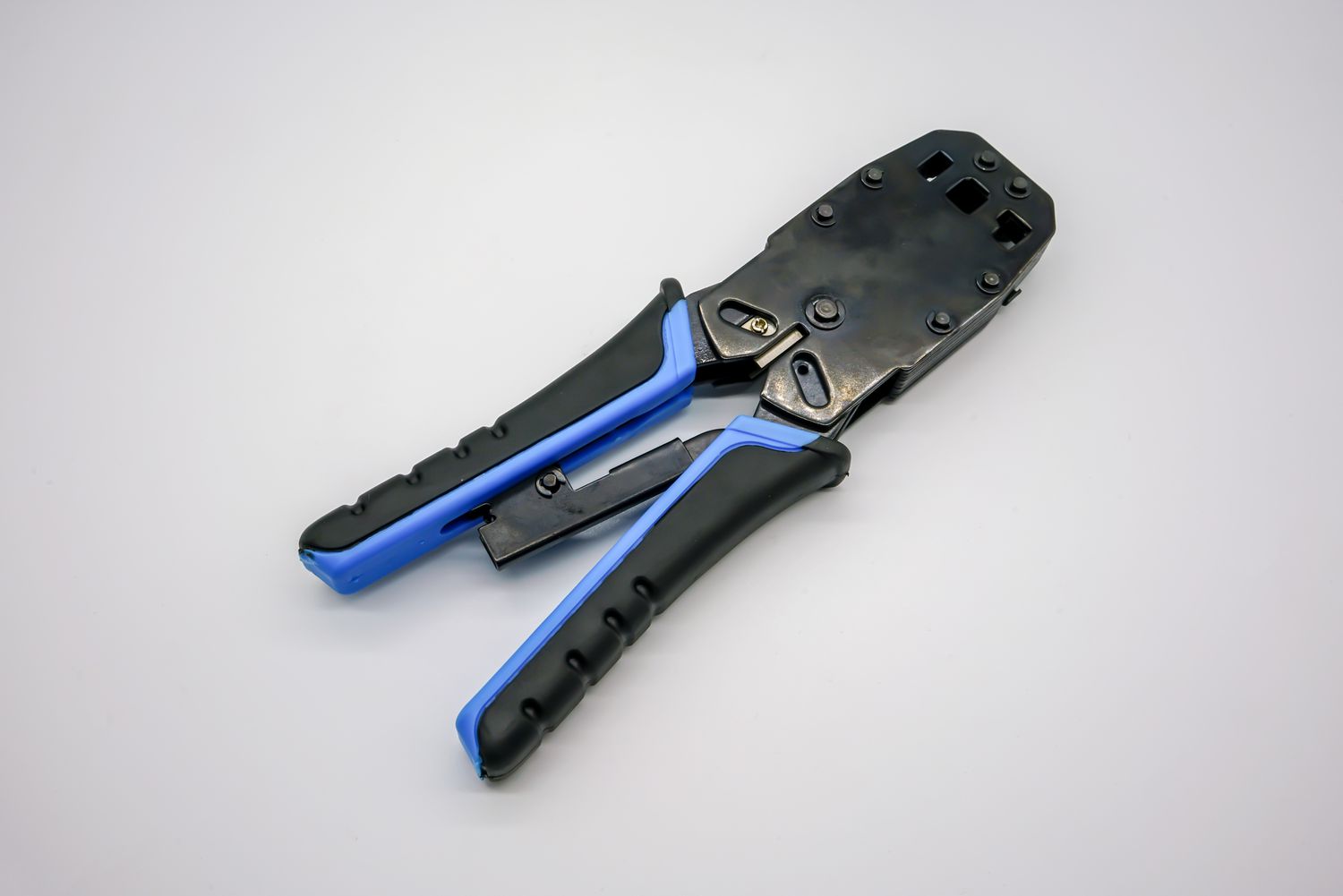

Articles
What Are Basic Hand Tools Needed For An Industrial Electrical Job
Modified: October 31, 2024
Discover the essential hand tools required for industrial electrical jobs. Read our informative articles on how to choose the right tools and improve your productivity.
(Many of the links in this article redirect to a specific reviewed product. Your purchase of these products through affiliate links helps to generate commission for Storables.com, at no extra cost. Learn more)
Introduction
When it comes to electrical work in an industrial setting, having the right hand tools is crucial. The proper tools not only make the job easier and more efficient, but they also contribute to the safety of the electrician and the overall quality of the work being done. Whether you are a seasoned professional or just starting out in the field, having a comprehensive set of hand tools is essential.
In this article, we will explore the basic hand tools needed for an industrial electrical job. From screwdrivers to multimeters, we will cover a wide range of tools that are commonly used in electrical work. So, let’s dive in and explore the must-have tools for any industrial electrician!
Key Takeaways:
- Safety equipment such as goggles, hard hats, and gloves are crucial for protecting industrial electricians from potential hazards when working with electrical systems. Prioritizing safety ensures a secure and efficient work environment.
- Having a comprehensive set of hand tools, from screwdrivers and pliers to label makers and circuit breaker finders, is essential for industrial electricians to enhance productivity, maintain safety standards, and deliver top-notch electrical installations and maintenance services.
Safety Equipment
Before we dive into the specific hand tools, it’s important to address the importance of safety equipment. Safety should always be the top priority when working with electricity. As an industrial electrician, you must have the proper safety equipment to protect yourself from potential hazards.
Here are some essential safety equipment items that you should have:
- Safety goggles: These protect your eyes from flying debris, sparks, and other potential hazards.
- Hard hat: A hard hat protects your head from falling objects and electrical shocks.
- Gloves: Insulated gloves provide protection against electric shocks and burns.
- Ear protection: Earplugs or earmuffs are essential to protect your hearing from loud noises.
- Respirator: A respirator helps filter out harmful dust and fumes.
- Work boots: Steel-toed work boots provide protection for your feet.
- Fire extinguisher: Having a fire extinguisher nearby is essential in case of an electrical fire.
These are just a few examples of the safety equipment that should be on your list. Always prioritize safety and ensure that you have the necessary equipment to protect yourself and others on the job site.
Screwdrivers
When it comes to electrical work, screwdrivers are one of the most essential hand tools. They are used for various tasks, such as tightening or loosening screws, adjusting terminal connections, and opening electrical panels or devices.
There are different types and sizes of screwdrivers available, and it’s important to have a variety to handle different screw types. Here are some common types of screwdrivers:
- Flathead screwdriver: Also known as a slotted screwdriver, this tool has a flat, straight blade. It is used for screws with a single slot in the head.
- Phillips screwdriver: This screwdriver is characterized by a cross-shaped tip and is used for screws with a corresponding cross-shaped slot in the head.
- Torx screwdriver: Torx screws have a star-shaped pattern on the head, and a Torx screwdriver is required to tighten or loosen them.
- Hex screwdriver: Hex screws have a hexagonal socket in the head, requiring a hex screwdriver or Allen key.
Having a range of screwdrivers in different sizes ensures that you can tackle any screw-related task in an industrial electrical job. It’s important to choose screwdrivers with insulated handles to protect yourself from electrical shocks. Also, consider investing in screwdriver sets that offer various sizes and types for convenience.
Remember to always select the appropriate screwdriver size that matches the screw head to avoid damaging the screw or the equipment you are working on. Properly maintained and well-functioning screwdrivers are a must-have for any industrial electrician.
Pliers
Pliers are another indispensable tool for an industrial electrician. They are used for gripping, bending, cutting, and manipulating wires and cables. Pliers come in various types, each designed to serve a specific purpose in electrical work. Here are some common types of pliers that you should have in your toolbox:
- Needle-nose pliers: These pliers have long, narrow jaws that taper to a fine point, making them ideal for grasping and manipulating small wires or reaching into tight spaces.
- Side-cutting pliers: Also known as wire cutters or lineman’s pliers, these pliers feature cutting edges near the pivot point. They are used for cutting and stripping wires.
- Channel-lock pliers: These adjustable pliers have a wide-opening jaw that can be adjusted to fit different sizes of nuts, bolts, and pipes. They are useful for gripping and turning irregularly shaped objects.
- Crimping pliers: Crimping pliers are specifically designed for crimping terminals onto wires, ensuring secure connections. They have a specialized jaw with various crimping slots to accommodate different types and sizes of connectors.
When selecting pliers, choose ones made of high-quality materials with insulated handles to provide protection against electric shocks. Comfortable grip handles are also important for long periods of use.
Having a well-rounded set of pliers ensures that you can handle various tasks involved in industrial electrical work. Make sure to keep them clean and in good working condition to maximize their effectiveness and lifespan.
Wire Strippers
Wire strippers are essential tools for an industrial electrician, used to remove the insulation covering from wires safely and efficiently. They are designed to strip different gauges of wire without damaging the conductor.
There are two main types of wire strippers:
- Manual wire strippers: These are handheld tools that require manual adjustment and operation. They typically have adjustable jaws or notches that allow you to choose the appropriate size for the wire gauge you are working with. Manual wire strippers often include cutting edges as well, making them versatile for both stripping and cutting wires.
- Automatic wire strippers: Automatic wire strippers are a more advanced option. These tools feature self-adjusting jaws that automatically adjust to the size of the wire. All you have to do is squeeze the handles, and the stripper cuts through the insulation and removes it. This type of wire stripper is particularly useful when dealing with a large volume of wires or when working with wires of varying sizes.
When using wire strippers, it’s important to choose the appropriate gauge range setting and ensure that the cutting edges are sharp. Using dull or incorrect-sized wire strippers can lead to nicked or damaged conductors, affecting the overall integrity of the electrical connection.
Having a reliable pair of wire strippers in your tool kit streamlines the process of preparing wires for connections, saving you time and effort. Proper use and maintenance of the wire strippers will ensure their longevity and effectiveness.
Wire Cutters
Wire cutters, also known as diagonal pliers or lineman’s pliers, are essential tools for an industrial electrician. They are used to cut through wires and cables with precision and ease.
Wire cutters come in various sizes and styles, but the most common type is the diagonal cutter, which features angled cutting edges that meet at a sharp point. This design allows for clean and precise cuts, especially in tight spaces.
When selecting wire cutters, consider the following factors:
- Size: Choose wire cutters that can comfortably handle the wire gauge you typically work with. Using wire cutters that are too small can result in jagged or frayed cuts, while using ones that are too large may require more effort to cut through the wire.
- Material: Wire cutters are typically made of high-quality steel or chrome-vanadium alloy. Look for cutters with hardened cutting edges to ensure durability and long-term performance.
- Grip: Look for wire cutters with comfortable handles that provide a non-slip grip, reducing hand fatigue during extended use.
Proper use of wire cutters is crucial to ensure clean and accurate cuts. Place the wire in the cutting jaws close to the pivot point, and apply controlled pressure to make the cut. Avoid excessive force, as it could damage the wire or the tool itself.
With a reliable pair of wire cutters in your toolkit, you can confidently tackle wire cutting tasks in various industrial electrical applications.
Crimping Tool
A crimping tool is a specialized tool used to create secure and reliable electrical connections by compressing connectors onto wires. It is an essential tool for industrial electricians who often deal with terminal connections, such as connecting wires to switches, outlets, or circuit breakers.
There are different types of crimping tools available, each designed for specific types of connectors and wire gauges. Here are a few common types:
- Ratchet crimp tool: A ratchet crimp tool provides a consistent and controlled crimping force. It features a ratcheting mechanism that ensures proper compression and prevents over or under crimping. Ratchet crimp tools are commonly used for larger wire gauges and terminal connectors.
- Non-ratchet crimp tool: Non-ratchet crimp tools are simpler in design and rely on manual force when crimping. They are suitable for smaller wire gauges and more delicate connectors.
- Modular plug crimp tool: This type of crimping tool is specifically designed for Ethernet or telephone cable connectors, known as modular plugs. It allows for precise crimping of the connector onto the individual wires.
When using a crimping tool, it’s important to ensure that you choose the correct size and type of connector to match the wire gauge. Proper crimping creates a strong mechanical and electrical connection while maintaining the integrity of the wire.
Investing in a high-quality crimping tool will ensure consistent, professional-grade connections and minimize the chances of connection failures or loose terminals. Regular maintenance and inspection of the tool will help prolong its lifespan and ensure optimal performance.
A crimping tool is an invaluable tool for any industrial electrician, providing the ability to create reliable and durable connections quickly and efficiently.
Multimeter
A multimeter, also known as a volt-ohm meter (VOM), is a versatile and essential tool for any industrial electrician. It is used to measure various electrical parameters, including voltage, current, resistance, and continuity, making it a crucial instrument for troubleshooting electrical circuits and systems.
A typical multimeter consists of a digital or analog display, a dial or menu for selecting the measurement function, and probes for connecting to the circuit or component being tested. Here are some of the key functions and features of a multimeter:
- Voltage measurement: Multimeters can measure both AC (alternating current) and DC (direct current) voltage. This is useful for determining voltage levels, checking for voltage drops, or diagnosing faulty power supplies.
- Current measurement: Multimeters can measure both AC and DC current, allowing you to assess the flow of electrical current within a circuit. This is important for determining circuit loads, identifying excessive current draw, or analyzing the behavior of electrical devices.
- Resistance measurement: With the resistance measurement function, you can assess the resistance of a component or a specific section of a circuit. This helps in troubleshooting open or short circuits and verifying the value of resistors in a circuit.
- Continuity testing: Multimeters can check for the continuity of a circuit, indicating whether there is a complete path for current flow. This is handy for identifying broken wires, loose connections, or faulty switches.
When using a multimeter, it is essential to select the appropriate measurement range and use the correct probe settings. Additionally, ensure that the probes are securely connected to the circuit or component being tested to obtain accurate readings.
Investing in a quality multimeter with reliable accuracy and a clear display will significantly aid in diagnosing electrical problems and ensuring the safe and efficient operation of industrial electrical systems.
Insulation Tape
Insulation tape, also known as electrical tape or vinyl tape, is a must-have tool for any industrial electrician. It is primarily used to insulate and protect electrical connections, wires, and cables from moisture, heat, and physical damage.
Insulation tape is made of a thin layer of plastic, such as vinyl or PVC, with an adhesive backing. It is available in various colors, with each color serving a specific purpose in electrical work. Here’s why insulation tape is essential:
- Electrical insulation: Insulation tape provides an extra layer of protection and insulation to exposed wires or connections. It helps to prevent short circuits, electrical shocks, and potential fire hazards.
- Identification and organization: Different colors of insulation tape can be used to mark and identify specific wires or circuit components. This aids in organizing and troubleshooting electrical systems more efficiently.
- Waterproofing: Insulation tape has excellent waterproofing properties, making it ideal for protecting outdoor electrical connections or wiring in damp environments.
- Physical protection: In addition to insulation, this tape also provides a layer of physical protection against abrasion, accidental contact, and other forms of damage to the electrical components.
When using insulation tape, it’s important to properly wrap and overlap the tape around the wire or connection to ensure a secure and tight seal. This helps to prevent the tape from unraveling or coming loose over time.
Remember to choose high-quality insulation tape that is specifically designed for electrical applications. It should have good adhesion properties, be flame retardant, and offer resistance to UV light and other environmental factors.
Insulation tape is an indispensable tool for maintaining the safety and integrity of electrical connections, making it an essential part of an industrial electrician’s toolbox.
Read more: What Hand Tools Do I Need As A Mechanic
Electrical Tape
Electrical tape is a crucial tool for industrial electricians, providing insulation, protection, and identification for various electrical applications. It plays a significant role in securing and safeguarding electrical connections, wires, and cables.
Unlike insulation tape, which is typically used for insulating and protecting exposed wires, electrical tape is primarily used for securing and bundling wires, marking circuits, and providing an extra layer of mechanical protection.
Here are some key uses and benefits of electrical tape:
- Wire bundling and organization: Electrical tape is often used to bundle multiple wires together, providing a neat and organized appearance. This helps to reduce clutter and improve the overall aesthetics of electrical installations.
- Marking circuits and phases: Different colors of electrical tape can be used to designate specific circuits, phases, or voltage levels. This aids in identifying and troubleshooting electrical systems more efficiently.
- Mechanical protection: Electrical tape provides an additional layer of mechanical protection to wires and cables, helping to prevent damage from abrasion, impact, or other physical stresses.
- Temporary fixes: In emergency situations, electrical tape can be used as a temporary fix for minor electrical issues, such as repairing a frayed wire or insulating a small exposed area.
When using electrical tape, it’s important to ensure a tight and secure wrap around the wires. Start the wrap slightly overlapping the tape and continue in a spiral motion, maintaining tension as you go. This helps to prevent the tape from unraveling or coming loose over time.
Choose electrical tape that is UL-listed, which indicates that it meets safety and performance standards. It should also be flame retardant and resistant to heat, moisture, and chemicals for maximum durability and protection.
Electrical tape is a versatile and necessary tool for industrial electricians, providing not only electrical insulation but also mechanical protection and organization for a wide range of electrical applications.
Fish Tape
Fish tape is a specialized tool that is invaluable for industrial electricians when it comes to routing and pulling wires through conduits, walls, or other tight spaces. It is a flexible, slender tool that enables the smooth and efficient installation of electrical wiring.
Here are some key features and benefits of fish tape:
- Flexibility: Fish tape is designed to be flexible and able to navigate through bends and twists in conduits or wall cavities. This allows electricians to route wires in complicated or hard-to-reach areas.
- Durability: Fish tape is typically made from a strong, non-conductive material such as stainless steel or fiberglass, ensuring its durability and reliability in demanding electrical installations.
- Non-conductivity: Fish tape is non-conductive, minimizing the risk of electric shock or short circuits during wire installation or retrieval. This is especially important when working with live electrical systems.
- Ease of use: The tape itself is flat and can easily be inserted into conduits or wall openings. The electrician can then attach wires to the end of the tape and use it to pull the wires through the desired pathway.
- Multiple lengths and accessories: Fish tape comes in various lengths, allowing electricians to choose the appropriate size for specific job requirements. There are also accessories available, such as attachments for pulling wires around corners or joints.
When using fish tape, it’s important to take precautions to avoid damaging the tape or the wires being pulled. This includes using proper techniques to guide the tape, avoiding excessive force that could lead to kinks or bends, and being mindful of any obstructions or sharp edges that could cause damage.
Having a fish tape in your toolbox significantly simplifies the task of routing and pulling wires, making it an essential tool for industrial electricians working on installations or renovations where precise wire placement is necessary.
Always have a good set of insulated screwdrivers, wire strippers, pliers, and a multimeter on hand for any industrial electrical job. These basic hand tools are essential for safety and efficiency.
Conduit Benders
Conduit benders are specialized tools used by industrial electricians to accurately shape and bend metal conduits, such as EMT (electrical metallic tubing) or Rigid conduits. They are essential for laying out electrical wiring systems that require precise bends and angles.
Here are some key features and benefits of conduit benders:
- Precision bending: Conduit benders are designed to create accurate bends in conduits at specific angles, ensuring the proper alignment and routing of electrical wires. This is crucial for maintaining the integrity of the wiring system.
- Efficiency: With conduit benders, electricians can quickly and efficiently shape conduits to match the desired layout of electrical systems. This saves time and effort compared to manual bending methods.
- Different bender sizes: Conduit benders come in different sizes to match the diameter of the conduits being used. This allows for the precise bending of conduits of various sizes and materials.
- Angle guides: Some conduit benders include angle guides or degree markings, helping electricians achieve accurate bends at specific angles, such as 90 degrees or 45 degrees.
- Durability and stability: Conduit benders are typically made from high-strength materials, such as steel or aluminum, ensuring durability and stability during the bending process. This guarantees consistent and reliable bending results.
When using conduit benders, it’s important to follow safety guidelines and apply proper bending techniques to prevent distortion or damage to the conduit. This includes supporting the conduit correctly, using the appropriate size bender, and gradually applying force while making the bend.
Having a conduit bender in your toolbox allows you to accurately shape conduits and create efficient wiring layouts. This tool is essential for industrial electricians working on electrical installations that require precise conduit routing and bending.
Voltage Tester
A voltage tester is a vital tool for industrial electricians as it allows them to safely and accurately measure the presence or absence of electrical voltage in a circuit or electrical system. It helps in identifying live wires, checking for voltage levels, and ensuring the safety of the electrical work being conducted.
Here are some key features and benefits of voltage testers:
- Non-contact voltage testers: Non-contact voltage testers, also known as voltage detectors or proximity testers, detect the presence of voltage without the need for direct contact. These testers can sense the electrical field produced by live wires, providing a visual or audible indication of voltage nearby.
- Two-pole voltage testers: Two-pole voltage testers are handheld devices that require direct contact with the circuit being tested. They typically have two probes or leads that are used to make contact with the live and neutral or ground wires. Two-pole testers provide more accurate voltage measurements and can also check for continuity.
- Wide voltage range: Voltage testers are available with different voltage ranges, allowing electricians to measure various levels of voltage commonly found in industrial electrical systems.
- Visual and audible indicators: Most voltage testers have LED lights or LCD screens that indicate the presence or absence of voltage. They may also emit an audible beep or sound to further confirm voltage detection.
- Safety and reliability: Voltage testers are designed to provide accurate and reliable voltage measurements while ensuring the safety of the electrician. They are typically built with insulation and protection against electrical shocks.
When using a voltage tester, it’s important to follow safety procedures and make sure to select the appropriate voltage range for the specific circuit or system being tested. Additionally, always verify the functionality of the tester before each use and use it in compliance with relevant safety standards and regulations.
Having a voltage tester in your toolbox allows you to quickly and safely identify live wires and verify the presence of voltage in electrical systems. It is an essential tool for troubleshooting, maintenance, and ensuring the safety of industrial electrical work.
Read more: How To Get A Job In The Outdoor Industry
Cable Pulling Tools
Cable pulling tools are indispensable for industrial electricians when it comes to installing or removing electrical cables in various settings. These tools are designed to make the process of pulling cables through conduit, ducts, or other pathways easier and more efficient.
Here are some essential cable pulling tools that every industrial electrician should have:
- Cable pulling grips: Cable pulling grips, also known as wire mesh grips or cable socks, are used to securely grip and pull cables during installation or removal. They come in different sizes and designs to accommodate various cable diameters.
- Cable lubricant: Cable lubricant, also called cable pulling lubricant or wire pulling compound, is used to minimize friction and reduce the chances of cable damage during the pulling process. It helps the cable glide smoothly through conduit or other tight spaces.
- Cable rollers: Cable rollers, or cable guides, are used to guide cables smoothly along a desired pathway. They prevent the cable from becoming tangled or damaged during pulling and ensure a consistent and controlled movement.
- Cable pulling socks: Cable pulling socks, sometimes referred to as pulling grips or stockings, are expandable fabric sleeves that are attached to the end of a cable. They provide a larger surface area for gripping and pulling, making it easier to maneuver cables through bends and obstacles.
- Cable pulling tape: Cable pulling tape, also known as fish tape or electrical tape, is used to attach cables to pulling devices or to bundle cables together for easier pulling. It provides additional strength and stability during the pulling process.
Proper use of cable pulling tools is essential to prevent cable damage and ensure a smooth installation or removal process. It’s important to inspect cables for any signs of damage before pulling, choose the appropriate pulling tool for the cable size and weight, and follow proper techniques to minimize strain on the cable.
Having a comprehensive set of cable pulling tools ensures that industrial electricians can handle cable installations or removals efficiently and safely. These tools help save time and effort while minimizing the risk of damage to cables and the surrounding infrastructure.
Nut Drivers
Nut drivers are essential hand tools for industrial electricians, commonly used for tightening or loosening nuts and bolts. They provide a secure grip and allow for efficient and precise fastening of various electrical components.
Here are some key features and benefits of nut drivers:
- Versatility: Nut drivers come in a wide range of sizes to accommodate different nut and bolt sizes. They are available in both metric and standard measurements, ensuring compatibility with various electrical components and hardware.
- Comfortable grip: Nut drivers typically have ergonomic handles, providing a comfortable grip for prolonged use. This minimizes hand fatigue and improves overall efficiency and control during fastening tasks.
- Magnetic or non-magnetic options: Some nut drivers have magnetic tips, which can hold screws or nuts in place during installation or removal. This feature can be particularly useful when working in tight or hard-to-reach spaces.
- Insulated options: Insulated nut drivers, with their non-conductive handles, are ideal for electrical work where safety is a priority. They reduce the risk of electrical shock and protect against accidental contact with live wires.
- Quick socket changes: Many nut drivers feature a quick-change mechanism, allowing for easy and efficient socket swapping. This saves time and eliminates the need for multiple tools when working with different nut and bolt sizes.
When using nut drivers, it’s important to select the appropriate size that matches the nut or bolt being tightened or loosened. Applying excessive force or using an incorrect size could damage the fastener or the electrical component being worked on.
Investing in a set of high-quality nut drivers with a wide range of sizes and features ensures that industrial electricians can effectively handle fastening tasks in various electrical installations. These tools provide the necessary grip and control to ensure secure and reliable connections.
Adjustable Wrench
An adjustable wrench is a versatile hand tool that is widely used by industrial electricians for various tasks. It is designed to tighten or loosen nuts, bolts, and other fasteners of different sizes, making it an essential tool in any electrician’s toolbox.
Here are some key features and benefits of an adjustable wrench:
- Versatility: The adjustable wrench can be adjusted to fit different sizes of fasteners, eliminating the need for multiple wrenches. This makes it a versatile tool that can handle a wide range of tasks with ease.
- Quick and easy adjustment: An adjustable wrench typically has a knurled or smooth thumbwheel that allows for quick and easy size adjustment. This allows electricians to switch between different fasteners efficiently.
- Grip and torque: The jaws of an adjustable wrench are designed to provide a secure grip on fasteners, ensuring proper torque during tightening or loosening. This helps prevent slipping and reduces the risk of damage to the fastener or equipment.
- Durability: Adjustable wrenches are made of high-quality materials, such as steel, to provide durability and withstand the demands of industrial electrical work. They are designed to withstand heavy use and provide long-lasting performance.
- Wide jaw capacity: Adjustable wrenches typically have a wide jaw capacity, allowing them to handle a range of fastener sizes. This eliminates the need for multiple wrenches and provides flexibility in tackling different tasks.
When using an adjustable wrench, it’s important to ensure a proper fit on the fastener. The wrench should be positioned to engage the flats of the nut or bolt securely. Applying force at the right angle reduces the risk of slippage and damage to the fastener.
Having an adjustable wrench in your toolbox offers flexibility and convenience in handling various fasteners in electrical installations. It is a reliable and versatile tool that helps industrial electricians perform their tasks efficiently and effectively.
Allen Keys
Allen keys, also known as hex keys or Allen wrenches, are indispensable tools used by industrial electricians for tightening or loosening fasteners with hexagonal sockets. They are commonly used in electrical installations, equipment assembly, and maintenance tasks.
Here are some key features and benefits of Allen keys:
- Precision fit: Allen keys are designed to precisely fit into the hexagonal socket of fasteners, providing a secure grip and minimizing the risk of slippage. This allows for efficient and accurate torque application.
- Variety of sizes: Allen keys are available in a range of sizes, each corresponding to a specific metric or imperial measurement. Having a set of Allen keys with various sizes ensures that electricians can handle different fasteners encountered in electrical work.
- Compact and portable: Allen keys are compact and lightweight, making them easy to carry in a tool pouch or pocket. This portability allows electricians to have their Allen keys readily available for on-the-go tasks.
- Durability: Most Allen keys are made from high-strength materials, such as hardened steel or chrome vanadium alloy, ensuring durability and long-lasting performance. This allows them to withstand the demands of industrial electrical tasks.
- Non-magnetic: Allen keys are typically non-magnetic, which is advantageous when working with sensitive electrical components or in environments where magnetic interference can cause issues.
When using an Allen key, it’s important to select the correct size that matches the fastener being tightened or loosened. Using an incorrect size can strip the socket or result in an insufficient grip.
Investing in a quality set of Allen keys ensures that industrial electricians have the right tools to tackle various electrical tasks. Their precise fit and versatility make them essential for securing and adjusting fasteners in electrical equipment and installations.
Power Drill
A power drill is a versatile and indispensable tool for industrial electricians, providing the capability to drill holes, drive screws, and perform various tasks with efficiency and precision. It is an essential tool in electrical installations, maintenance, and repair work.
Here are some key features and benefits of a power drill:
- Drilling capabilities: A power drill can quickly and accurately drill holes in a variety of materials, including wood, metal, and plastic. This is essential for running wires, mounting electrical boxes, and installing fixtures.
- Screw driving functionality: Most power drills have a forward and reverse function, enabling electricians to drive screws into materials efficiently. This saves time and effort compared to manual screwdrivers.
- Versatility: Power drills come with a variety of drill bit sizes and attachments, allowing electricians to perform tasks beyond drilling and screw driving. These can include sanding, buffing, wire brushing, and more, making the power drill a versatile tool.
- Adjustable speeds and torque: Power drills typically have adjustable speed settings and torque control, allowing for precise control depending on the task at hand. This ensures accuracy and prevents damage to materials or fasteners.
- Corded or cordless options: Power drills are available in both corded and cordless versions. Corded drills provide continuous power and are suitable for tasks that require extended use, while cordless drills offer portability and flexibility.
When using a power drill, it’s important to wear appropriate safety gear, such as safety goggles and ear protection, and follow the manufacturer’s instructions. Securely grip the power drill and maintain control during operation to prevent accidents or damage to the workpiece.
Having a reliable power drill in your toolbox enhances productivity and allows for efficient completion of electrical tasks. Its drilling and screw driving capabilities, along with its versatility, make it an essential tool for industrial electricians.
Hole Saw
A hole saw is a specialized cutting tool used by industrial electricians to create large-diameter holes in various materials, such as wood, plastic, or metal. It is specifically designed for applications that require larger holes than what a traditional drill bit can achieve.
Here are some key features and benefits of a hole saw:
- Diameter range: Hole saws come in a variety of sizes, allowing electricians to create holes of different diameters to accommodate electrical conduits, pipes, or fixtures.
- Efficient cutting: A hole saw features sharp teeth or a cutting edge that efficiently cuts through the material, making the process quicker and requiring less effort compared to traditional drilling methods.
- Versatility: Hole saws can be used on a range of materials, including wood, plastic, thin metal, or drywall. This versatility makes them suitable for various electrical installation and routing tasks.
- Precision holes: Hole saws create clean and precise holes, ensuring a professional finish and proper fit for conduits or electrical boxes. This promotes a neat and organized appearance in electrical installations.
- Multiple attachment options: Hole saws can be used with different types of power drills, such as corded or cordless drills, depending on the application and available power source.
When using a hole saw, it’s important to follow safety precautions and wear appropriate protective gear, such as safety goggles and gloves. Securely hold the drill and apply steady pressure to prevent binding or excessive vibration.
Hole saws are essential tools for industrial electricians, allowing them to create precise and clean holes for running wires, installing outlets, or mounting boxes. With their efficiency and versatility, hole saws play a crucial role in electrical installations and routing tasks.
Circuit Breaker Finder
A circuit breaker finder is a valuable tool for industrial electricians when it comes to locating and identifying specific circuit breakers in electrical panels. It simplifies the process of troubleshooting, maintenance, and electrical system management by precisely identifying the breaker controlling a particular circuit.
Here are some key features and benefits of a circuit breaker finder:
- Accurate identification: Circuit breaker finders use a combination of a transmitter and receiver to accurately identify which circuit breaker corresponds to a specific electrical outlet or fixture. This saves time and eliminates the need for trial and error or manual inspection of multiple breakers.
- Visual and audible indicators: Circuit breaker finders typically provide both visual and audible signals, making it easier for electricians to locate the correct breaker in a busy electrical panel. The receiver may emit a tone or have LED lights to indicate the presence of the correct breaker.
- Ease of use: Circuit breaker finders are designed to be user-friendly, with simple operation and intuitive features. Electricians can quickly learn and use these tools to streamline their workflow.
- Compatibility: Most circuit breaker finders are compatible with a wide range of electrical panels commonly found in industrial settings. They can work with both standard and AFCI/GFCI breakers.
- Safety: Circuit breaker finders help electricians avoid accidental electrical shocks by providing a non-contact method for identifying circuit breakers. This is particularly important when working on live electrical systems.
When using a circuit breaker finder, it’s important to follow the manufacturer’s instructions and safety guidelines. Pay close attention to the limitations and specific usage requirements of the tool to ensure accurate and safe operation.
A circuit breaker finder is an invaluable tool for industrial electricians, allowing them to swiftly and accurately identify the correct breaker in electrical panels. It simplifies troubleshooting, maintenance, and circuit management, ultimately saving time and improving efficiency in electrical work.
Label Maker
A label maker is a handy tool for industrial electricians to create professional-looking labels for wires, cables, panels, outlets, and other electrical components. It provides a convenient way to organize and identify various elements in electrical systems, improving efficiency, safety, and maintenance procedures.
Here are some key features and benefits of a label maker:
- Organization and identification: Label makers allow electricians to create clear and legible labels for wires, cables, and electrical components. This helps ensure proper identification, preventing confusion and facilitating troubleshooting or maintenance tasks.
- Durability: Labels created with a label maker are typically designed to withstand harsh environmental conditions, such as moisture, heat, or exposure to chemicals. They adhere securely to surfaces, providing long-lasting readability and durability.
- Professional appearance: Label makers produce labels with a polished and professional look, enhancing the overall aesthetics and organization of electrical installations. Clear and precise labels contribute to a well-organized and efficient electrical system.
- Ease of use: Label makers are user-friendly, with intuitive controls and a variety of font styles, sizes, and label formats to choose from. Many models also offer built-in templates for common electrical labeling needs.
- Time-saving: Using a label maker significantly speeds up the labeling process compared to handwriting labels. Electricians can quickly create and print labels, saving time and increasing productivity.
When using a label maker, it’s important to select the appropriate label type and size for the specific application. Consider using labels that are designed for electrical use and have adhesive properties suitable for the surface material.
A label maker is an essential tool for industrial electricians, providing a convenient and professional way to organize, identify, and maintain electrical systems. With its versatility and ease of use, a label maker enhances efficiency, safety, and overall aesthetics of electrical installations.
Read more: What Is One Of The Basic Hand Tools That An Interior Search And Rescue Team Should Carry?
Conclusion
In the world of industrial electrical work, having the right tools is essential for efficiency, safety, and high-quality results. From screwdrivers and pliers to label makers and circuit breaker finders, each tool serves a specific purpose and contributes to the overall success of electrical installations and maintenance tasks.
Safety equipment such as goggles, hard hats, and gloves provide protection for electricians as they work with potentially hazardous electrical systems. Screwdrivers, nut drivers, and pliers allow for secure and precise fastening, while wire strippers and wire cutters help with efficient wire preparation and handling. Crimping tools ensure reliable and secure connections, while multimeters and voltage testers enable accurate electrical measurements and diagnostics.
Additional tools like fish tape assist with cable routing, conduit benders give precise shape to conduits, and hole saws allow for the creation of large-diameter holes. Power drills provide versatility for drilling and screw driving, and label makers help organize and identify various components and wires. The circuit breaker finder simplifies the process of locating specific breakers, while insulation tape and electrical tape provide electrical insulation and protection.
In conclusion, as an industrial electrician, it is crucial to have a comprehensive set of hand tools that cover a variety of tasks. Investing in high-quality tools ensures durability, accuracy, and efficiency in electrical work. By equipping yourself with the right tools, you can enhance productivity, maintain safety standards, and deliver top-notch electrical installations and maintenance services.
Remember, always follow safety guidelines, maintain your tools properly, and stay up to date with the latest industry practices. With the right set of tools and knowledge, you can excel in the world of industrial electrical work.
Frequently Asked Questions about What Are Basic Hand Tools Needed For An Industrial Electrical Job
Was this page helpful?
At Storables.com, we guarantee accurate and reliable information. Our content, validated by Expert Board Contributors, is crafted following stringent Editorial Policies. We're committed to providing you with well-researched, expert-backed insights for all your informational needs.
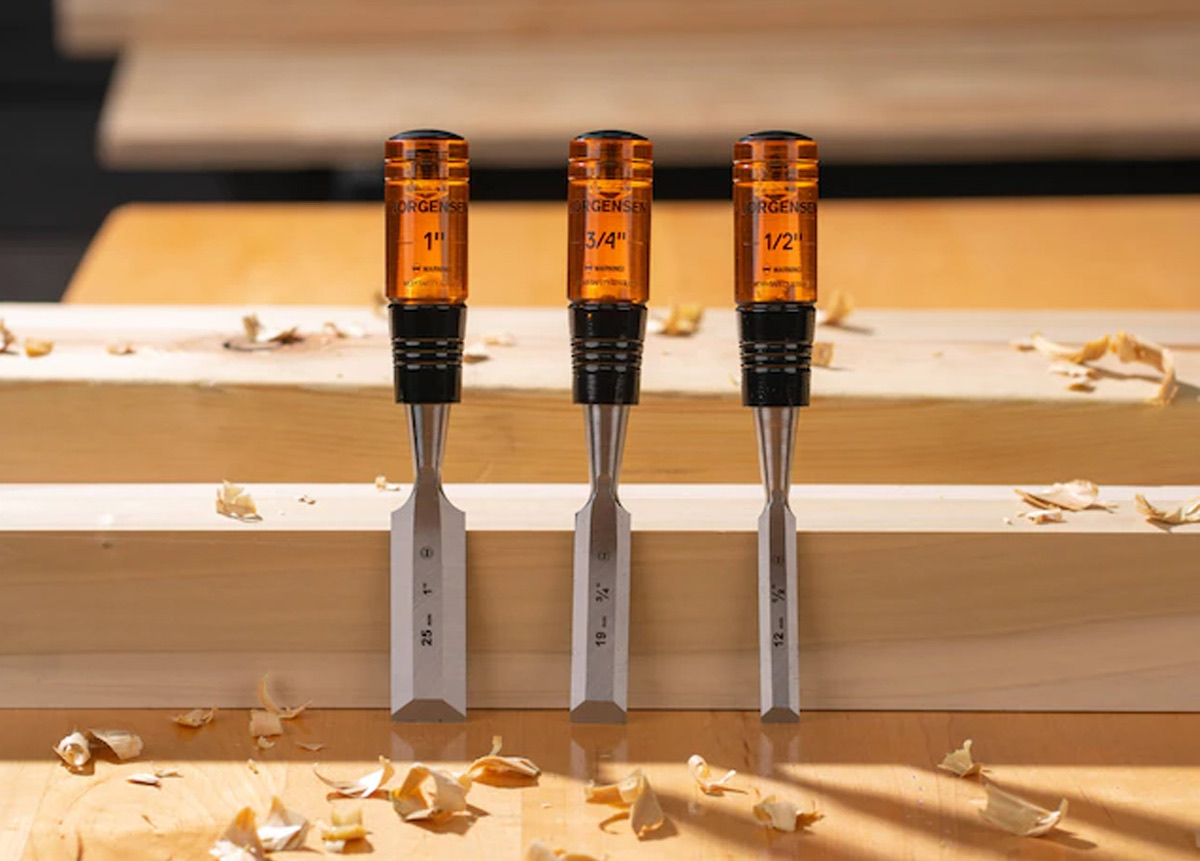
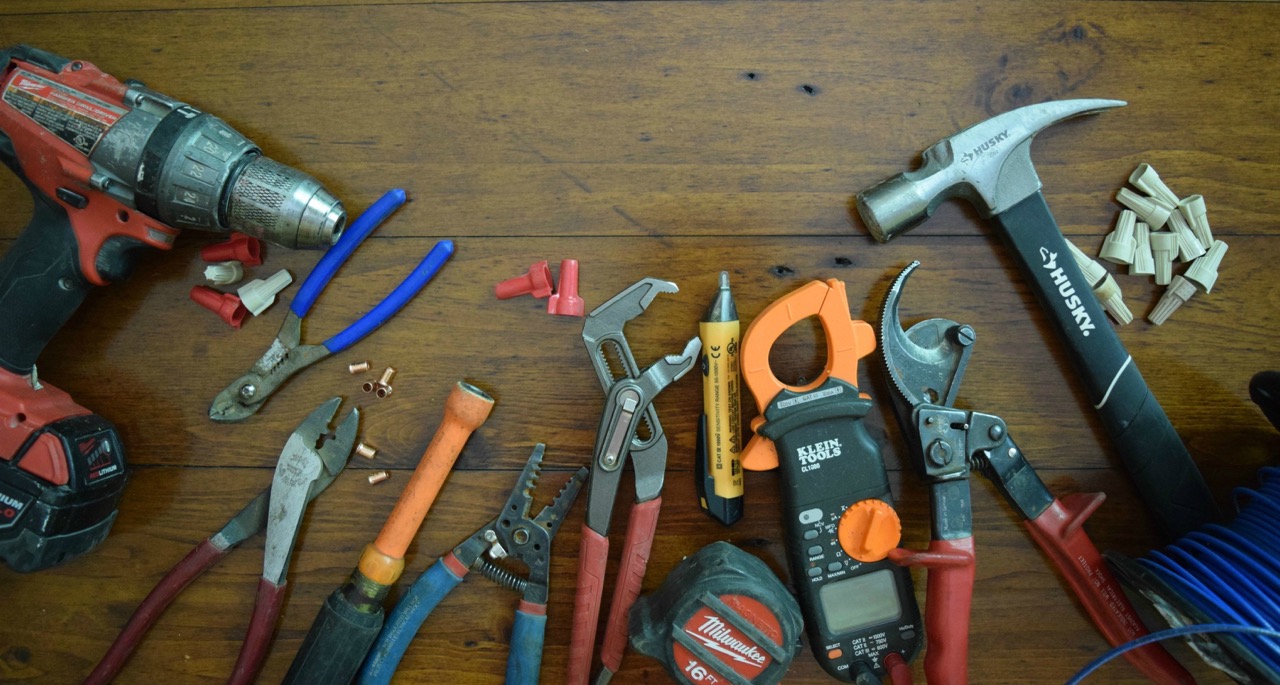
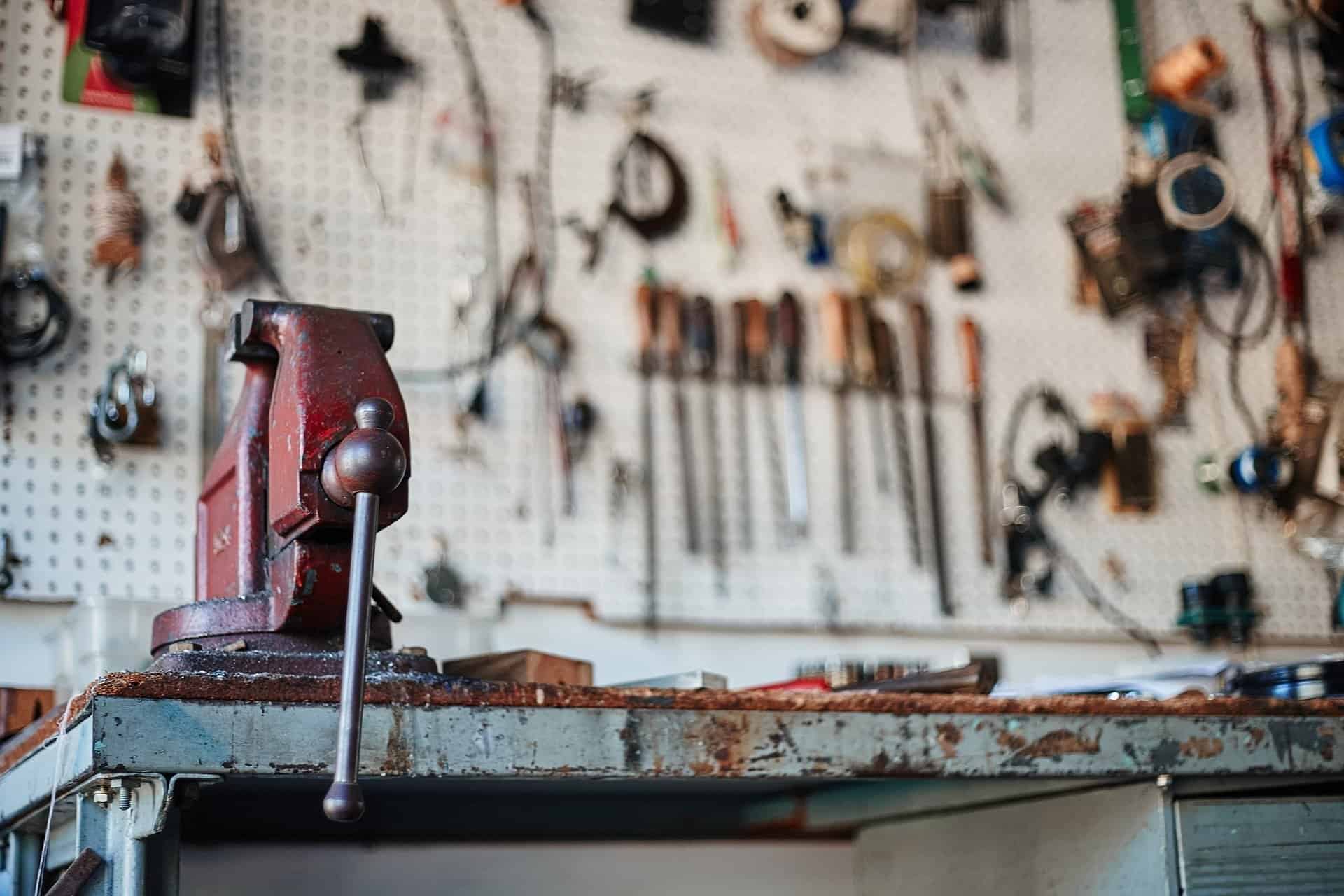
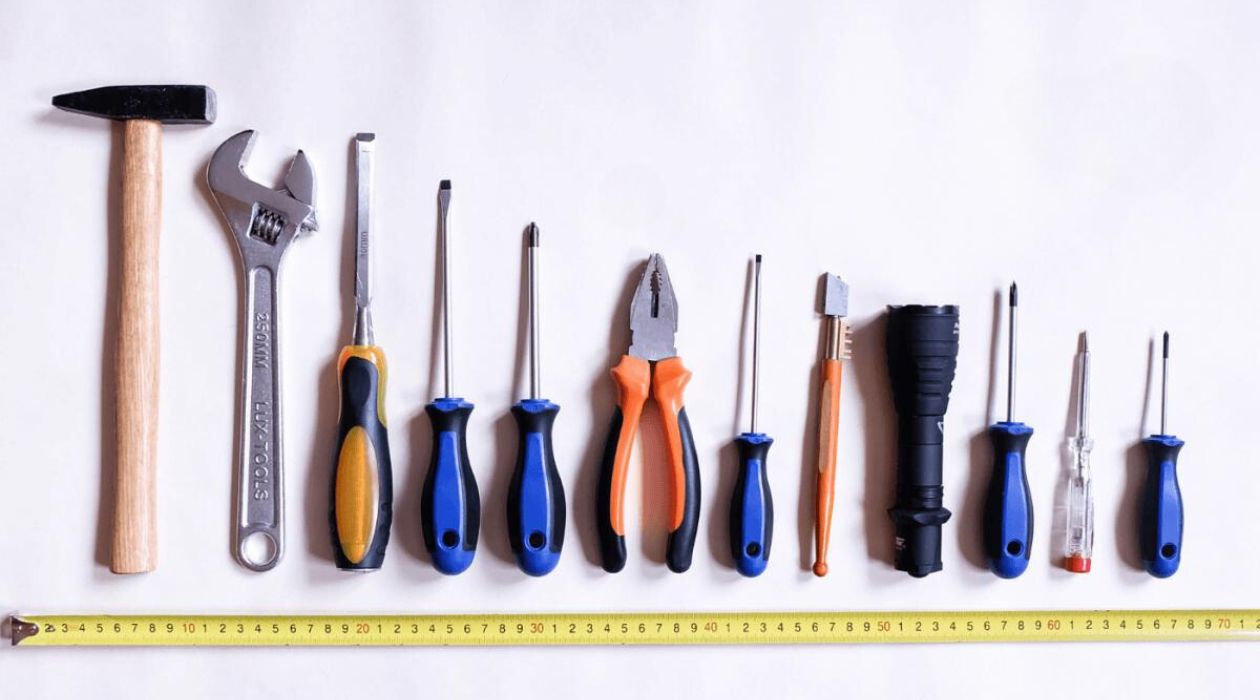
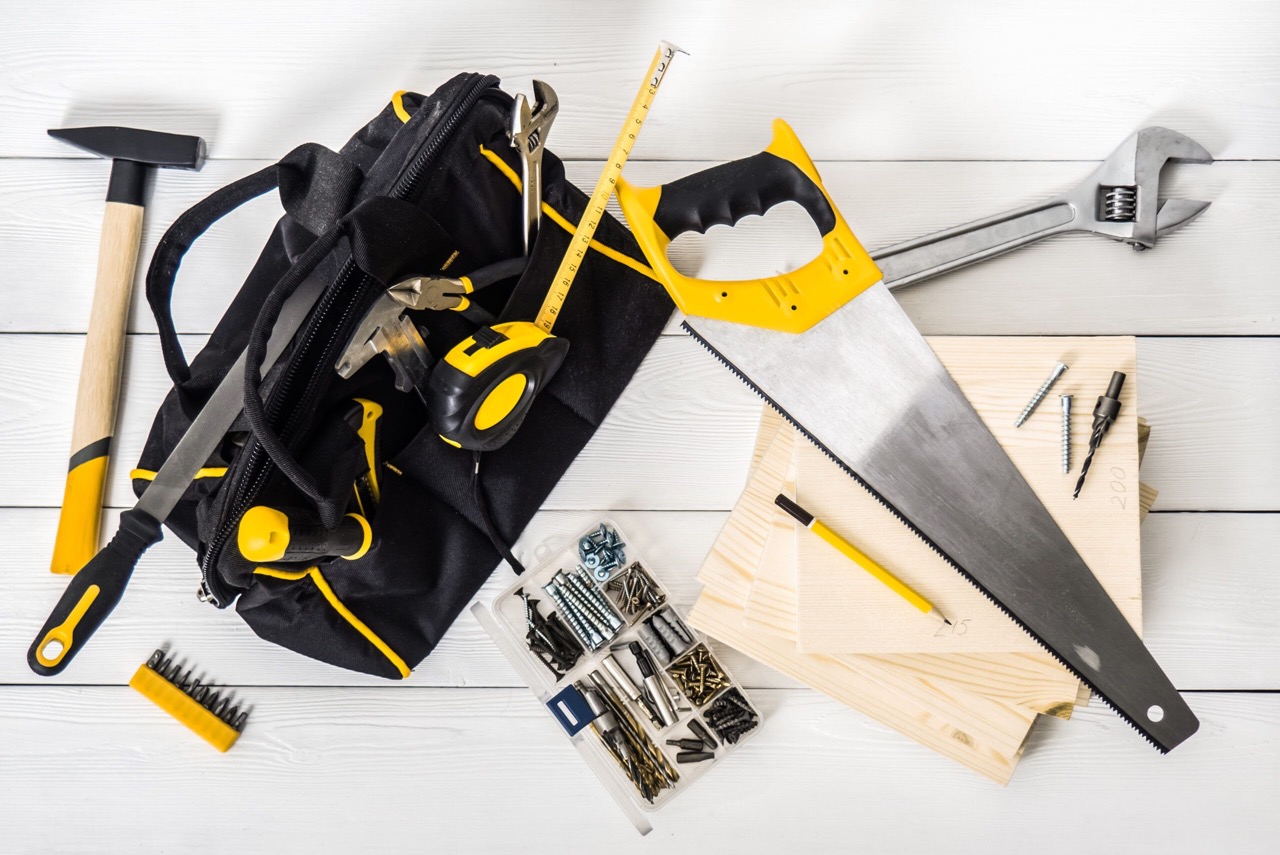
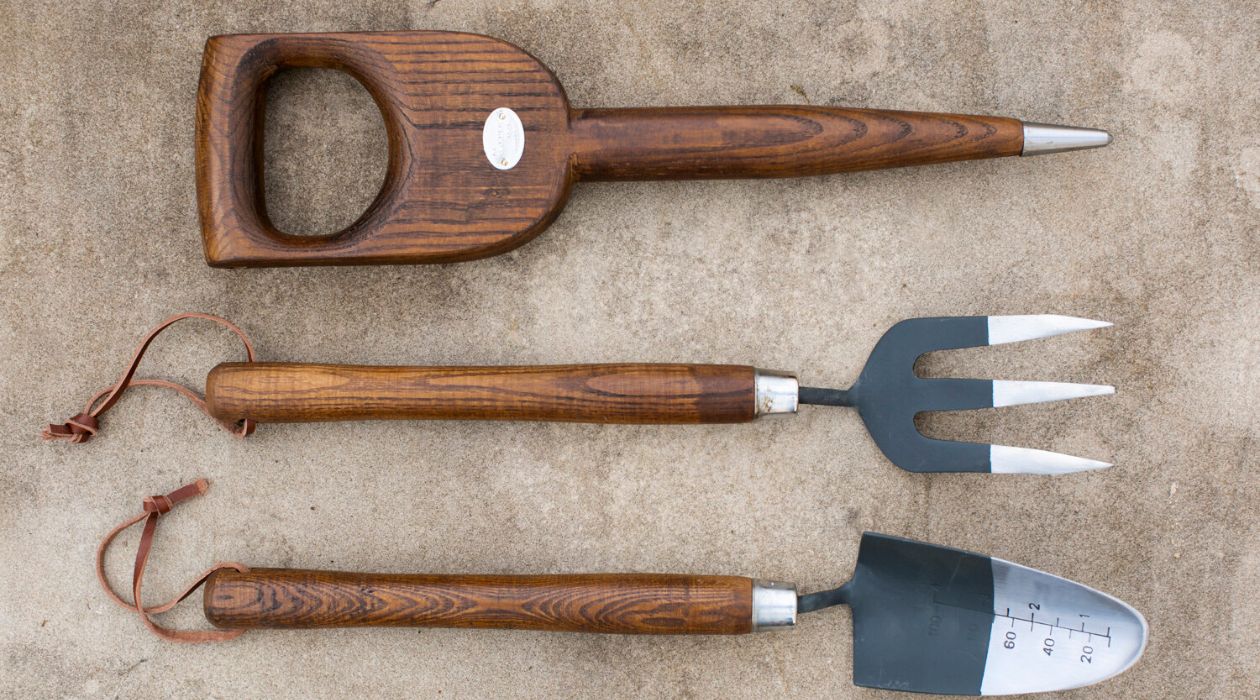

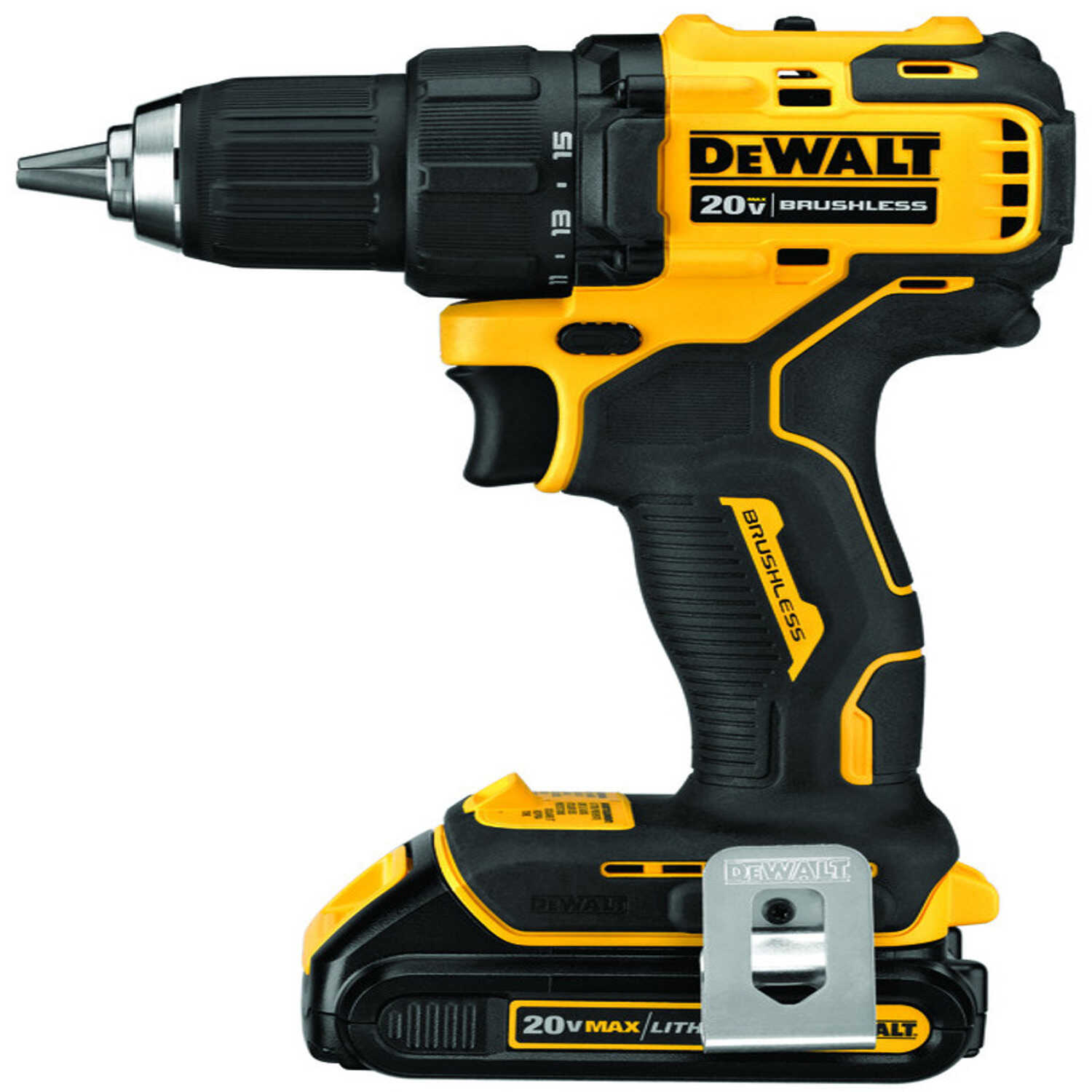
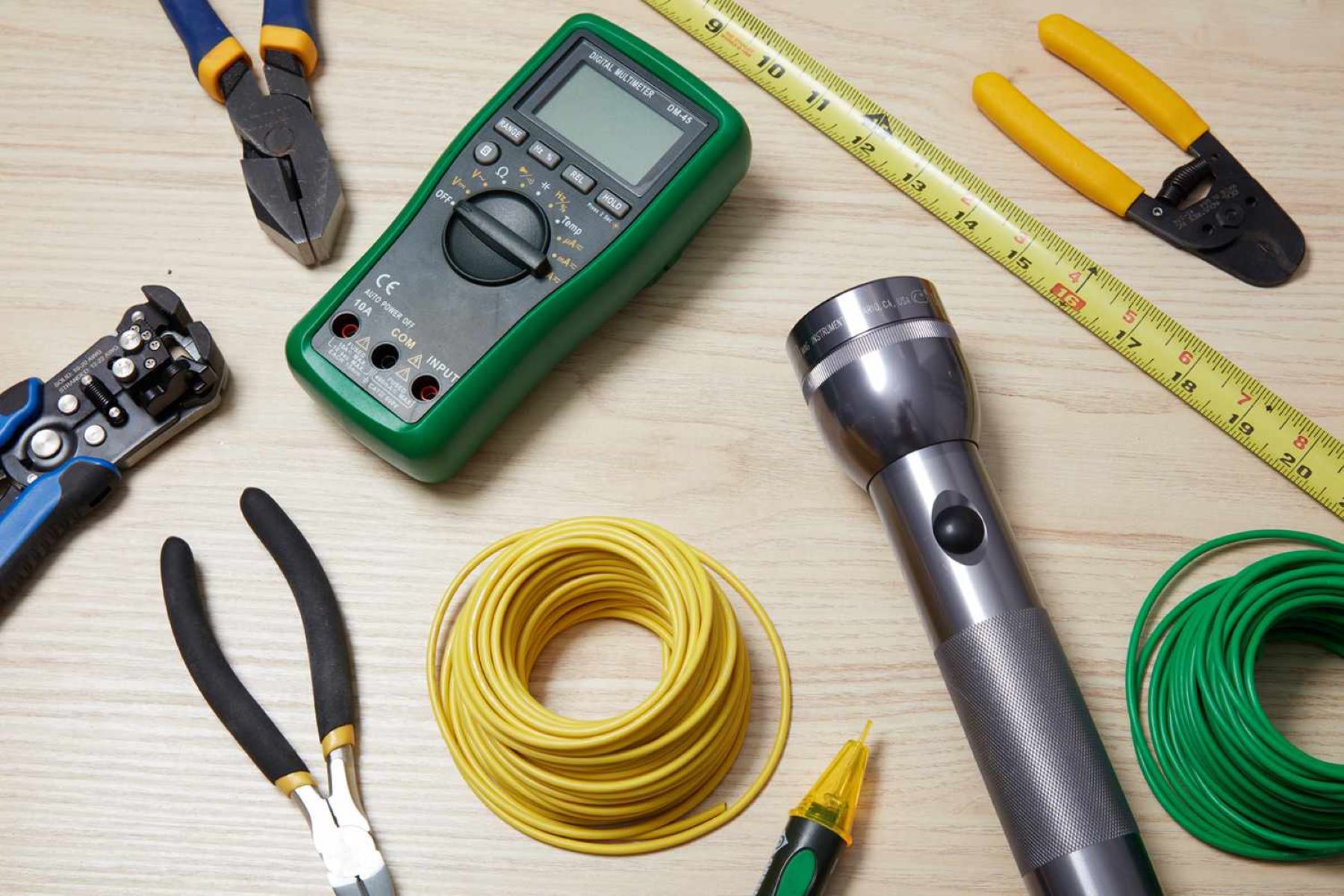
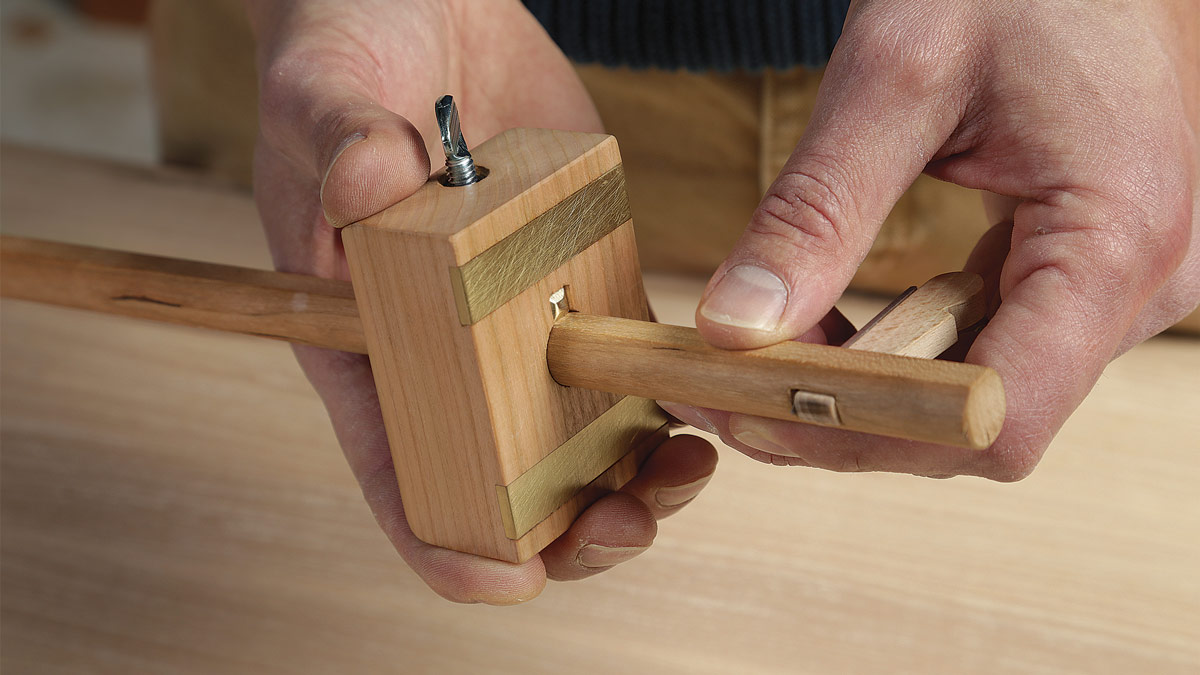

0 thoughts on “What Are Basic Hand Tools Needed For An Industrial Electrical Job”